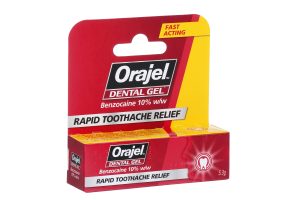
Oral cancer is one of the most challenging health concerns globally, with high incidence rates and diagnoses regularly made in the late stages. Dental professionals are best placed to pick up on the very early signs of oral cancer and act quickly to reach a speedy diagnosis and, ultimately, save lives. However, early signs can be hard to spot, so it’s important to raise awareness amongst both clinicians and patients in order to detect cases early, and offer patients superior support. This includes helping patients manage their symptoms before diagnosis, during treatment, and throughout recovery.
Prevalence and recent stats
In order to understand the impact of oral cancer in the UK, it’s important to look at recent reports. Last year alone, 3,637 people in the UK lost their life to mouth cancer, with incidence rising by 49% over the past ten years. Awareness of the major signs and symptoms of oral cancer is very poor, with the resulting late detection meaning the 5-year survival rate has hardly improved in the last few decades. This means that 53% of all mouth cancers are diagnosed in stage IV.[i]
Early detection
Detection in the late stages is all too common at present. As such, it’s important to consider ways to improve early detection with a number of public health strategies, and emerging technology. A study from 2013 outlined strategies to improve the early detection of oral cancer, primarily championing the use of screening programmes, through which at-risk patients present for screening early enough for disease to be detected in its early stages. Early detection, diagnosis, and treatment have been shown to significantly improve survival rates. As such, it is also essential for patient awareness to be improved, enabling them to notice signs more quickly and seek help in a timely manner. Additionally, practitioner training must be enhanced to ensure signs of oral cancer are being looked for in every appointment.[ii]
Modern innovations may also assist in the early detection of mouth cancer. The use of AI in diagnostics may help to overcome the limitations of traditional methods, with deep learning models already successful in medical imaging, and being used in pathology and radiology to enhance diagnostic workflows. Research from 2025 assessed the use of AI in oral cancer diagnostics. It achieved 93% accuracy, and tailored treatment recommendations with 87% accuracy – overall, resulting in a 20% improvement in survival rates.[iii]

Supporting patients in managing their symptoms
Symptoms of mouth cancer, even in the early stages, can be painful. As such, its important that practitioners offer the appropriate support and recommendations to manage their pain, before or after diagnosis. Common symptoms in the early stages include a mouth ulcer (lasting longer than three weeks), red or white patches in the mouth, a lump in the mouth or lip, pain in the mouth, difficulty speaking and swallowing, lump in the neck or throat, or unexplained weight loss.[iv]
There are a number of measures that patients might take to reduce discomfort in the mouth, before, during, and after treatment. To help soothe the mouth, it’s recommended to use lip balm to keep the lips moisturised, drink plenty of fluids, and eat chilled foods such as ice creams. It’s also recommended to avoid certain things such as spicy foods, raw vegetables, alcohol and tobacco, as well as acidic foods and juices.[v]
 It may also be useful to recommend pain relief medicines, where appropriate. Orajel™ Dental Gel is the ideal solution for direct application to painful areas in the mouth. The topical gel contains benzocaine, a powerful local anaesthetic, to numb painful areas in two minutes or less, providing relief for up to two hours.[vi]
It may also be useful to recommend pain relief medicines, where appropriate. Orajel™ Dental Gel is the ideal solution for direct application to painful areas in the mouth. The topical gel contains benzocaine, a powerful local anaesthetic, to numb painful areas in two minutes or less, providing relief for up to two hours.[vi]
In order to improve the success rates of mouth cancer diagnosis and treatment, early detection is essential. This must be achieved through raising awareness of the signs amongst patients and improving practitioners’ skills in recognising the symptoms. Technology for use in diagnosis continues to develop, offering hope for the future of detection and diagnosis, for more accurate treatment plans and, ultimately, better outcomes for patients.
At the centre of this, it’s important to remember that mouth cancer and its treatment can result in painful symptoms. Because of this, practitioners must offer appropriate advice for managing pain before, during, and post-treatment. By reducing discomfort as much as possible, practitioners can better support patients with mouth cancer in their journey to recovery.

For essential information, and to see the full range of Orajel products, please visit https://www.orajelhcp.co.uk/
 Author: Jenny Sinclair
Author: Jenny Sinclair
[i] https://www.mouthcancerfoundation.org/mouth-cancer-facts-and-figures/
[ii] Ford, P.J. and Farah, C.S., 2013. Early detection and diagnosis of oral cancer: Strategies for improvement. Journal of Cancer Policy, 1(1-2), pp.e2-e7.
[iii] Satheeskumar, R., 2025. AI-driven diagnostics and personalized treatment planning in oral oncology: Innovations and future directions. Oral Oncology Reports, 13, p.100704.
[iv] https://www.nhs.uk/conditions/mouth-cancer/symptoms
[v] https://www.cancer.org/cancer/managing-cancer/side-effects/eating-problems/mouth-sores




